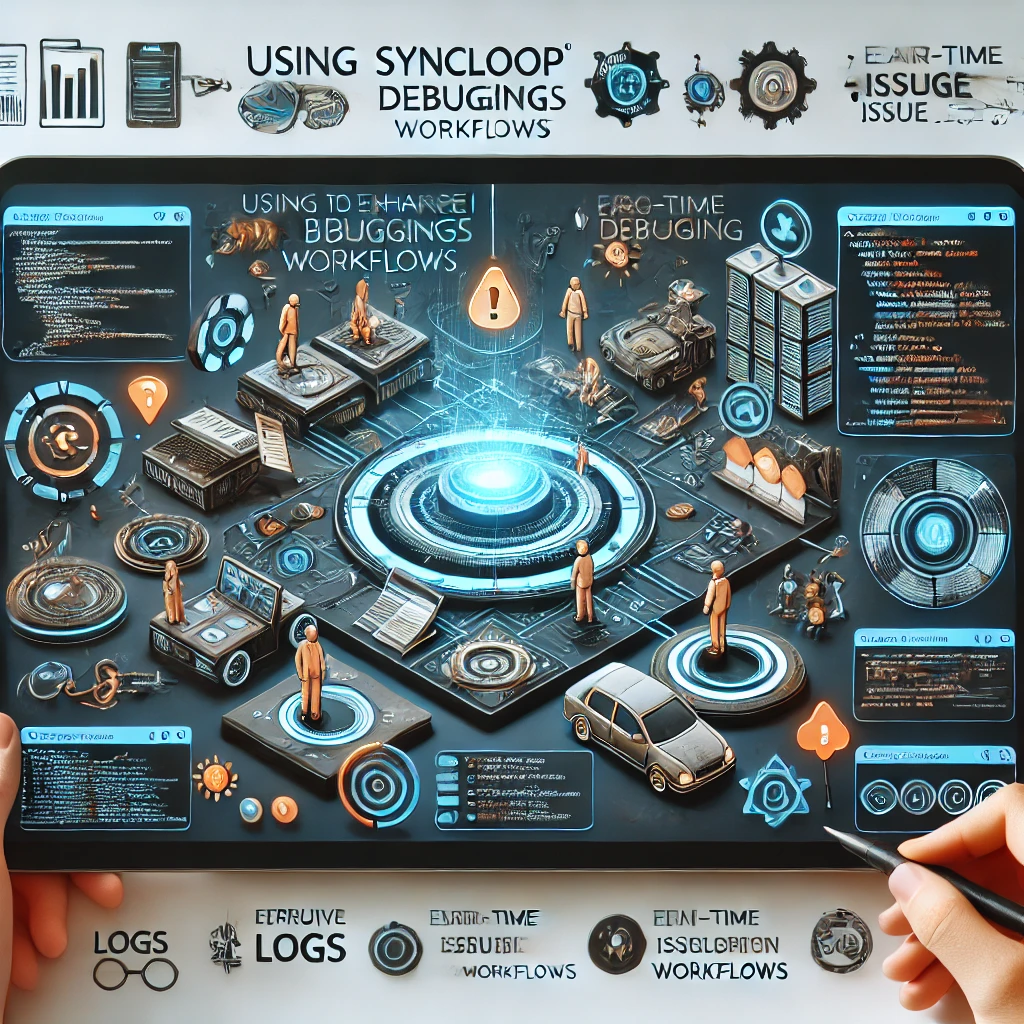Using Syncloop to Enhance API Debugging Workflows

The Challenges of API Debugging
Debugging APIs often involves addressing multiple layers of complexity:
- Identifying Errors: Tracking down issues in multi-step workflows can be daunting without the right tools.
- Data Validation: Ensuring incoming and outgoing data adheres to expected formats is critical for API stability.
- Error Reproduction: Replicating conditions that lead to errors requires accurate simulation of real-world scenarios.
- Performance Bottlenecks: Debugging slow endpoints or workflows demands detailed performance insights.
Syncloop simplifies these tasks by providing a comprehensive debugging environment tailored for API workflows.
Features of Syncloop for API Debugging
1. Real-Time Logs and Monitoring
Syncloop’s dashboard provides real-time logs, displaying detailed information about API requests, responses, and errors. Developers can trace every step of a workflow, making it easier to pinpoint issues.
2. Workflow Visualization
Visual representations of workflows help developers understand how data flows through their APIs. This clarity aids in identifying misconfigured steps or logic errors.
3. Advanced Error Tracking
Syncloop captures detailed error reports, including stack traces and contextual data. This makes it easier to understand the root cause of failures.
4. Data Transformers
Transformers allow developers to manipulate and inspect data during debugging, ensuring payloads meet expected formats and contain the correct information.
5. Replay and Simulation
With Syncloop, developers can replay previous API requests or simulate different scenarios to reproduce and analyze issues.
6. Conditional Debugging
Syncloop’s Ifelse controls enable debugging workflows under specific conditions, allowing targeted troubleshooting without disrupting unaffected processes.
Enhancing Debugging Workflows with Syncloop
Step 1: Monitor API Activity
Enable real-time logging in Syncloop to capture all API activity. Use filters to focus on specific endpoints or workflows that require debugging.
Step 2: Analyze Logs and Metrics
Review logs to identify patterns or anomalies. Pay attention to error codes, response times, and failed requests.
Step 3: Isolate the Problem
Use Syncloop’s workflow visualization to trace the execution path of a problematic request. Isolate the specific step causing the issue.
Step 4: Test Data Transformations
Inspect and modify data payloads using Transformers. Ensure the data sent to and from your APIs adheres to the expected schema.
Step 5: Reproduce Errors
Replay problematic requests using Syncloop’s simulation tools. Adjust parameters to test different scenarios and confirm the root cause.
Step 6: Optimize and Resolve
Once the issue is identified, update the workflow configuration or endpoint logic. Use Syncloop’s debugging tools to validate the fix.
Step 7: Monitor for Recurrence
After deploying the fix, continue monitoring API activity to ensure the issue doesn’t reoccur under different conditions.
Real-World Applications
1. E-Commerce Platforms
Debugging issues like failed payments or incorrect order statuses is critical for maintaining customer trust. Syncloop’s tools streamline the process by providing actionable insights.
2. IoT Systems
For IoT applications, debugging intermittent device communication issues is a common challenge. Syncloop helps visualize workflows and pinpoint disruptions in data flows.
3. Healthcare APIs
Ensuring data accuracy and reliability is vital in healthcare applications. Syncloop’s advanced error tracking and data validation tools ensure compliance with strict industry standards.
4. Financial Services
In financial applications, debugging latency or transaction errors is crucial. Syncloop’s replay and monitoring features ensure these issues are resolved promptly.
Best Practices for API Debugging with Syncloop
- Enable Detailed Logging: Capture comprehensive logs to ensure no detail is overlooked during debugging.
- Use Conditional Workflows: Isolate issues by testing specific workflow conditions without affecting the entire system.
- Leverage Replay Tools: Reuse historical data to replicate issues and verify fixes.
- Monitor Metrics Continuously: Track performance metrics to detect subtle issues before they escalate.
- Document Debugging Processes: Maintain clear documentation of issues and resolutions to streamline future debugging efforts.
Why Syncloop Stands Out
Syncloop’s combination of real-time monitoring, detailed error tracking, and flexible debugging tools make it an invaluable resource for API development. Its user-friendly interface and robust features simplify the debugging process, enabling faster and more effective issue resolution.
Conclusion
API debugging doesn’t have to be a time-consuming ordeal. Syncloop equips developers with the tools they need to identify, reproduce, and resolve issues efficiently. By integrating Syncloop into your development workflow, you can enhance the reliability and performance of your APIs while reducing downtime and development cycles.
Back to Blogs